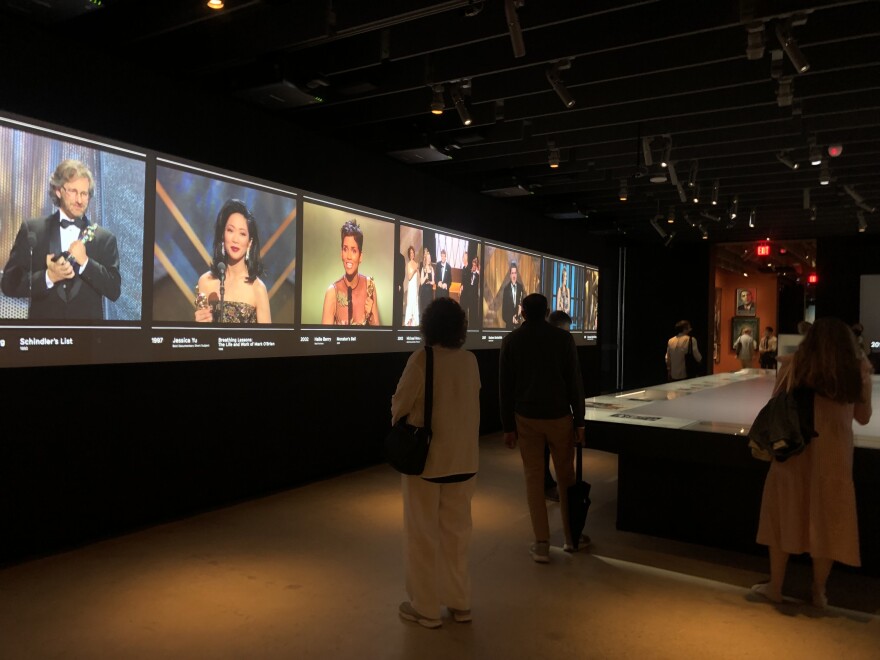With our free press under threat and federal funding for public media gone, your support matters more than ever. Help keep the LAist newsroom strong, become a monthly member or increase your support today.
The Oscars Have Been #SoWhite. The Academy Museum Isn't

The Academy of Motion Pictures Arts and Sciences first contemplated a movie museum nearly a century ago. As the Academy marked the millennium the board championed the idea. And over the past decade the Academy Museum moved somewhat steadily toward completion, periodically stalled by design and fundraising issues.
Now, with the museum set to open to the public on Sept. 30, the most recent delay was actually the most consequential: The pandemic shutdown allowed the museum’s leaders to examine their part in the global conversation over systemic racism following George Floyd’s murder.
While its galleries will feature an array of movie fan memorabilia--including Dorothy’s ruby slippers from “The Wizard of Oz” and R2D2 from “Star Wars”--the 300,000-square foot museum (with 50,000 square feet of gallery space) also will acknowledge Hollywood’s troubled history over race and representation.
“Where there’s been controversy, we need to explore it and we do,” said Bill Kramer, the museum’s director and president.
We have to provide spaces for everyone to tell their stories, and that there is real harm when communities are misrepresented or excluded.
A video and audio gallery of Oscar acceptance speeches, for example, includes Hattie McDaniel’s supporting actress acceptance for 1939’s “Gone With the Wind” (the first Black performer to win an Academy Award) alongside Chloé Zhao’s remarks when she became the first woman of color to collect the directing Oscar for last year’s “Nomadland.”
“It’s critical that a museum is a place where we're looking at the past in order to have an influence on the future,” said Jacqueline Stewart, the museum’s chief artistic and programming officer. “So there's a real intentionality to connect films and traditions that haven't been connected before.”
Just a few feet from an exhibit focused on 1941’s “Citizen Kane” is a gallery dedicated to “Real Women Have Curves,” 2002’s landmark in Latinx cinema. And in the museum’s history of the Academy Awards, one display is dedicated to the #OscarsSoWhite campaign, prompted by the 2015 ceremony in which not a single acting nomination went to a performer of color.
Beyond showcasing countless and some epic-sized artifacts--one room features a giant and convincing Mt. Rushmore painting used as a backdrop in “North by Northwest”-- the museum also will present a series of screenings, some aimed at exposing visitors to unfamiliar work that perhaps shouldn’t be.
“We have to provide spaces for everyone to tell their stories, and that there is real harm when communities are misrepresented or excluded,” Stewart said. “And the talent is out there too, which is also undeniable at this point. I feel that it's my role to ensure that this is not a passing fad, that we are creating the structures that will make commitments to diversity, equity and inclusion always a part of what the Academy Museum is doing.”







